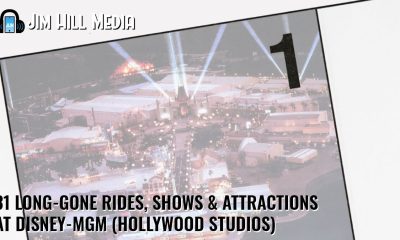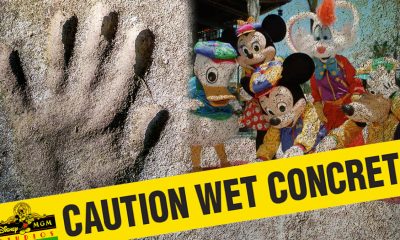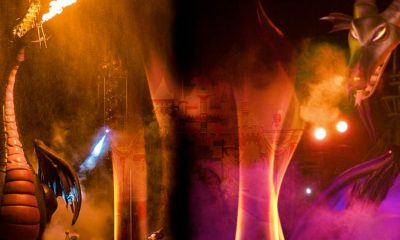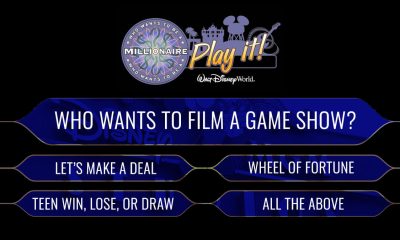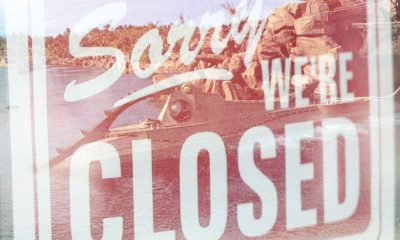Theme Parks & Themed Entertainment
Why For did WDW wave “Buh-Bye” to Seven Seas Lagoon’s Wave Machine?
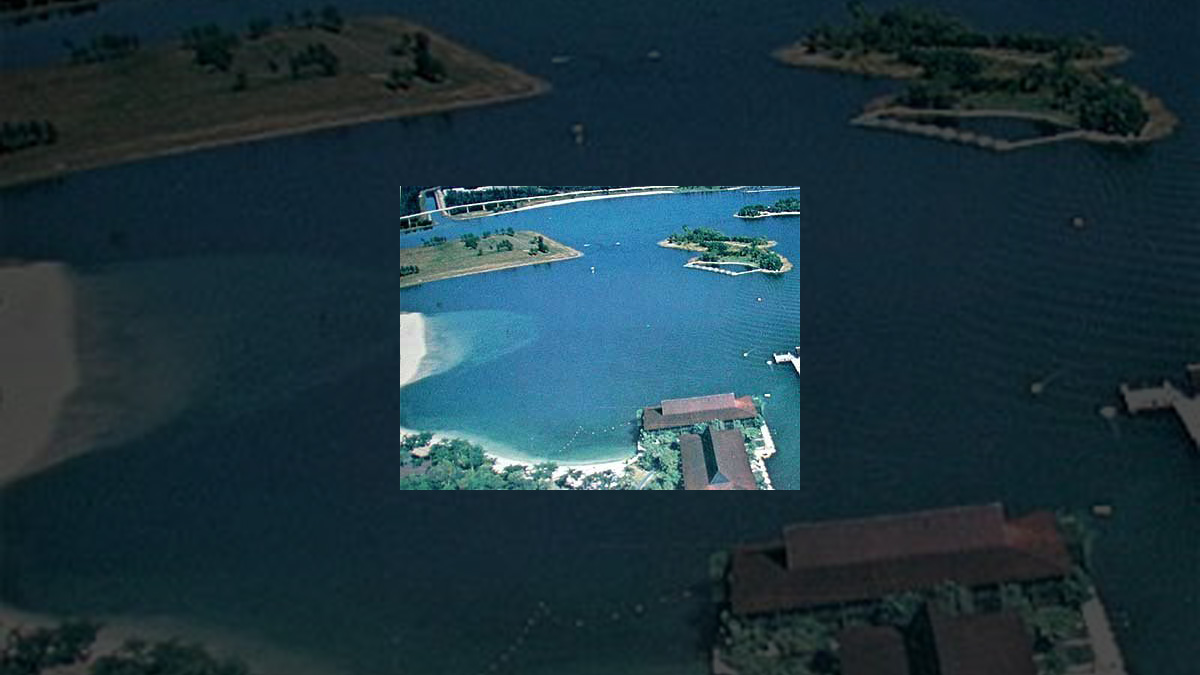
TikiTerry writes in to say:
I’ve really been enjoying all of these Disney World history
stories that you’ve been sharing with JHM readers lately. So I was wondering if
you could maybe talk about the Polynesian Resort‘s wave machine. How long did
it work? Where was it located? Why did Disney shut it down?
TikiTerry –
Wow. That’s a lot of questions. And – to be honest – there
aren’t a lot of answers out there. Mostly because the team that opened Walt
Disney World was genuinely embarrassed that they’d spent $400,000 (which is
$2.2 million in 2011 dollars) on a piece-of-sh … machinery that didn’t work
properly. And for a while there in late 1971 / early 1972, there was concern
that the wave machine might wind up costing Dick Nunis his job.
You see, it was Dick who – in his role as vice president of
operations of Disneyland and then-just-beginning-construction Walt Disney World
Resort – who had pushed & pushed hard that a wave machine be one of the key
elements of Seven Seas Lagoon (You know? That 200-acre, man-made lagoon which
the Imagineers had built out in front of the Magic Kingdom).
“And why did Nunis push hard for this wave machine?,” you
ask. Well, you have to remember why people vacationed in Florida before there
was a Walt Disney World. It was to take advantage of the wonderful weather as
well as snag a spot for their blanket on the Sunshine State’s 825 miles of
beautiful sandy beaches.
And given that Dick viewed the Atlantic Ocean & the Gulf
of Mexico as Disney World’s direct competition … Well, he wanted Seven Seas
Lagoon to have some of the real ocean’s appeal. And – to Nunis’ way of thinking
– that meant white sandy beaches. More importantly, the sound & feel of
waves lapping against the shore.
Besides, you have to remember that the Company’s original
vision for WDW was that it would be “The Vacation Kingdom of the World.” That –
in addition to those days that they exploring the Magic Kingdom – Guests would also
want to go boating on Bay Lake, hiking around Fort Wilderness, shopping at the
Lake Buena Vista Village …
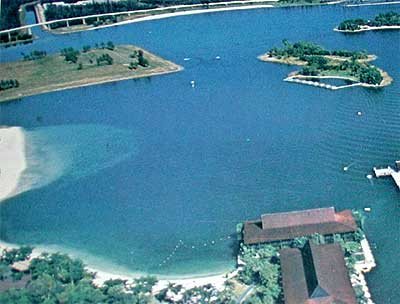
An overview of the wave machine set-up in WDW’s Seven Seas Lagoon,
with Beachcomber Island and all of its wave-making machinery to the
top right of the photo and Beachcomber Beach towards the bottom
left. Copyright Disney Enterprises, Inc. All rights reserved
And as for Seven Seas Lagoon, Dick dreamed of someday staging
surfing competitions out there. Nunis figured that pictures of all those buff
guys riding the curls (with WDW’s Polynesian Village conveniently in the background of each shot, of course)
would be great publicity for the Resort. In much the same way that those photos
of Arnold Palmer & Jack Nicklaus playing on the Magnolia & Palm courses
at the first-ever Walt Disney World Golf Championships & Pro-Am Tournaments
in late 1971 helped raise the public’s awareness of WDW’s Golf Resort.
The only problem was – in order to turn Nunis’ dream into a
reality … Well, that wave machine would have to be installed before Seven Seas
Lagoon was then filled in with water. More to the point, a special cove area would
have to be carved out just down the beach from Disney World’s Polynesian
Village. Someplace that was within walking distance of the hotel which was surf
& surfing friendly.
And this was all going to cost serious money. And given that – in late 1969 /
early 1970 – the costs of constructing Walt Disney World had already begun spiraling
out-of-control … finding an additional half million dollars (which would cover
the cost of the wave machine as well as construction of the Polynesian Village’s
Beachcomber Cove area) was going to take some doing.
But Dick was up to the task. So he twisted some arms and
cajoled a few members of senior management at WED. And eventually Roy O. Disney
himself voiced his approval for the project.
So the money was found. And the wave machine was installed.
And then the Seven Seas Lagoon was filled with water. And sometime during the
Summer of 1971, Walt Disney World’s wave machine was fired up. And – from all
accounts – it initially worked very well.
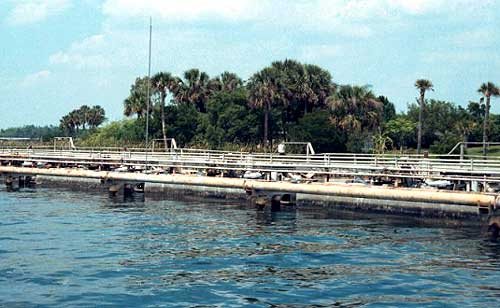
A close-up view of the mechanism used to power the wave machine on Beachcomber
Island. Copyright Disney Enterprises, Inc. All rights reserved
And by that I mean: Disney Legend Bill “Sully” Sullivan (who
was part of the opening team of the Walt Disney World Resort) has very fond
memories of spending an afternoon with his family at Beachcomber Cove during
the late summer of 1971. “I taught my son to surf (on the curls that were
created by) the wave machine that was at the Polynesian,” he recalled in a 2007
interview with Disney historian Jim Korkis.
“So if Cast Members were enjoying the effect that WDW’s wave
machine created in September of 1971, why then don’t Guests who visited Disney
World in October of that same year – during
the Resort’s first official month of operation – recall this amazing piece of
machinery at all?,” you ask. It’s simple, really. By then, Seven Seas Lagoon’s
wave machine had been shut down for tinkering.
“And what exactly was the problem with WDW’s wave machine?,”
you query. Well, it’s at this point that the stories diverge.
Now some longtime Disney World employees will tell you that
the wave machine was shut down because it did too good a job of replicating the
action of genuine ocean waves. Meaning that it kept causing serious beach
erosion at Beachcomber Cove.

The Southern Seas II paddles by Beachcomber Island (please note — just off the stern of
this WDW steamship — some of the machinery used to power Seven Seas Lagoon’s
wave machine). Copyright Disney Enterprises, Inc. All rights reserved
On the other hand, Transportation veterans will tell you
that the real reason that WDW’s wave machine was shut down was that the surf
that this extremely expensive piece of machinery created made it extremely
difficult to operate watercraft safely in and around the Polynesian Village. With
the Southern Seas (i.e. that 100 foot-long side-paddlewheel-powered steamship that
was used to transport Guests around the Resort from 1971 to 1975) being particularly
vulnerable to the rolling waves that would come rebounding out of Beachcomber
Cove and then make Seven Seas Lagoon a tricky stretch of water to traverse.
And there are other longtime WDW employees who will tell you
that the main reason that the wave machine had been turned off by the time Walt
Disney World had begun its three-day-long grand opening celebration on October 23,
1971 was that this piece of machinery had already proven to be problematic.
That this wave machine could only run for a few hours at a time before it would
then break down. And then it would take a full team of engineers working in wet
suits to finally get the thing going again.
Mind you, though Dick Nunis himself insisted (as part of his
June 1999 Window-on-Main-Street ceremony at Disneyland Park) that WDW’s wave
machine ” … only ran for one day,” that wasn’t really the case. In fact, there’s
a black-and-white photograph in a 1972 edition of “Eyes & Ears” (i.e. the then-weekly
newsletter / magazine which was distributed to all Disney World) which shows
Dick on a surf board, riding a wave into Beachcomber Cove. So WDW’s wave
machine was operational – if somewhat erratically so – well into 1972.
“So why didn’t the Imagineers and/or WDW’s engineers just
find a way to fix this wave machine?,” you ask. The story that I’ve always
heard is that – in order to make the sort of permanent repairs that would have
finally made this expensive & balky piece-of-sh … machinery work properly …
Well, that would have involved draining Seven Seas Lagoon and/or building a
very expensive dike around Beachcomber Island (i.e. the artificial isle just
offshore where all of the machinery for WDW’s wave machine was kept). And
during the early, early days of Walt Disney World (when the Company was still
trying to recover the $400 million that they’d poured into the construction of
this Resort), that just wasn’t an option.

Dick Nunis’ Window on Main Street in Disneyland Park. Please note — according to the
bottom line of this turn-of-the-century window advertisement — that wave machines are
supposedly a Nunis specialty. Copyright Disney Enterprises, Inc. All rights reserved
And speaking of money … One surprising source of revenue for
the Walt Disney World Resort in those early, early days turned out to be
parties for big convention groups. To be specific: Major corporations were
willing to pay top dollars for beachside luaus for their employees similar to
the one that was held for the press & honored guests as part of WDW’s grand
opening back in October of 1971.
And as you might have already guessed, that luau was held
right at waterside in Beachcomber Cove. Which – given the hours & hours of on-site
prep that are typically involved with properly staging corporate events of this
size – meant that the beachfront area where these highly-expensive-to-produce
waves were supposed to come rolling in often had to be closed off for
Polynesian Village Guests.
Then – because a number of high profile (more importantly,
would have been extremely profitable for the Resort) corporate parties had to
be suddenly cancelled during the Summer of 1972 due to Central Florida’s highly
changeable weather – a decision was made to build an all-weather structure down
along the shore by Beachcomber Cove. Here’s a description of that project from
Walt Disney Productions’ 1972 annual report:
Luau Cove – Due to the popularity of our evening luaus,
particularly as a convention activity, the need arose for an all-weather
shelter where these events could be held, rain or shine. Luau Cove, now under
construction along the beach adjacent to the Polynesian Village, will provide
sheltered seating for 500 guests, as well as a stage and food warming
facilities. It is scheduled for completion early (next) year.
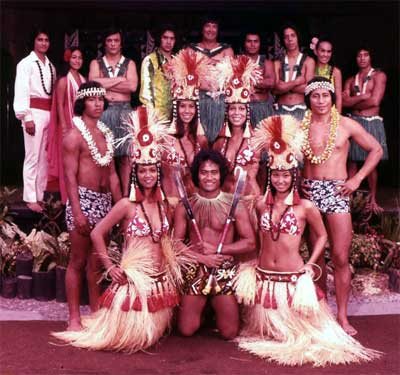
WDW Cast Members posing in front of the then-newly-completed Luau
Cove facility at Disney’s Polynesian Village. Copyright Disney
Enterprises, Inc. All rights reserved
And once that structure opened in 1973, the handwriting was
pretty much on the wall for WDW’s wave machine. So much of Beachcomber Cove’s
waterfront property had been eaten up by the construction of Luau Cove that it then
just didn’t make much sense for Polynesian Village’s employees to continue promote
this now-extremely-narrow strip of beach as a place where Guests could frolic
in the surf. Which – at that point, anyway – rarely if ever came rolling in.
So the wave machine was left to rust & corrode just
off-shore in Seven Seas Lagoon. And as for those who whispered about how Dick
Nunis was going to lose his job with the Company because of this
half-million-dollar boondoggle … Well, as it turns out, there were so many
other things that went wrong at Walt Disney World during its first three years
of operation (EX: those bob-around boats that constantly broke down out of Bay
Lake. Which meant that Cast Members had to regularly go out and rescue boatloads
of stranded, sun-burned tourists. Not to mention all of the poorly-poured
cement floors in the Garden Wings of the Contemporary Resort. Which then had to
be jack-hammered up and replaced in 1973) that the wave machine debacle quickly
faded from memory.
Mind you, Dick Nunis never forget about that wave machine.
He still believed that – in the proper setting (more importantly, with a piece
of machinery that would actually work the way that it was supposed to) – that an
in-land ocean experience, where Guests would then get the chance to frolic in
some artificially-created surf, would be a huge hit with WDW visitors. So Dick
pushed & pushed & pushed and eventually got Typhoon Lagoon built. And
when that water park opened in June of 1989 and its 2.7 million gallon wave
pool immediately became Typhoon Lagoon’s most popular feature, Nunis finally
felt vindicated.
Anyway, TikiTerry, that’s the story of WDW’s wave machine.
As I’ve heard it, anyway. And if you folks have any Disney-related stories that
you’d like to see answered as part of a future Why For column, please feel free
to send them along to whyfor@jimhillmedia.com.
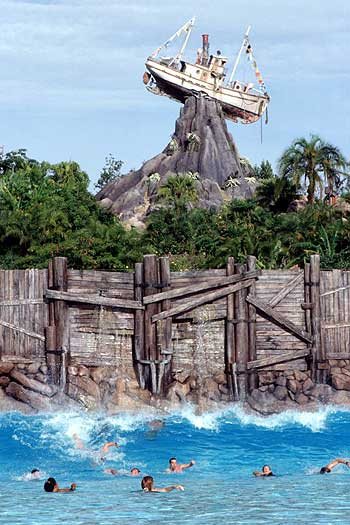
“If — at first — you don’t succeed … ” Copyright Disney
Enterprises, Inc. All rights reserved
Special thanks to the nice folks at Pixie Vacations for sponsoring
this week’s Why For.
Your thoughts?

Theme Parks & Themed Entertainment
Disney and Macy’s 90-Year Thanksgiving Day Parade Partnership: From Mickey’s First Balloon to Minnie’s Big Debut
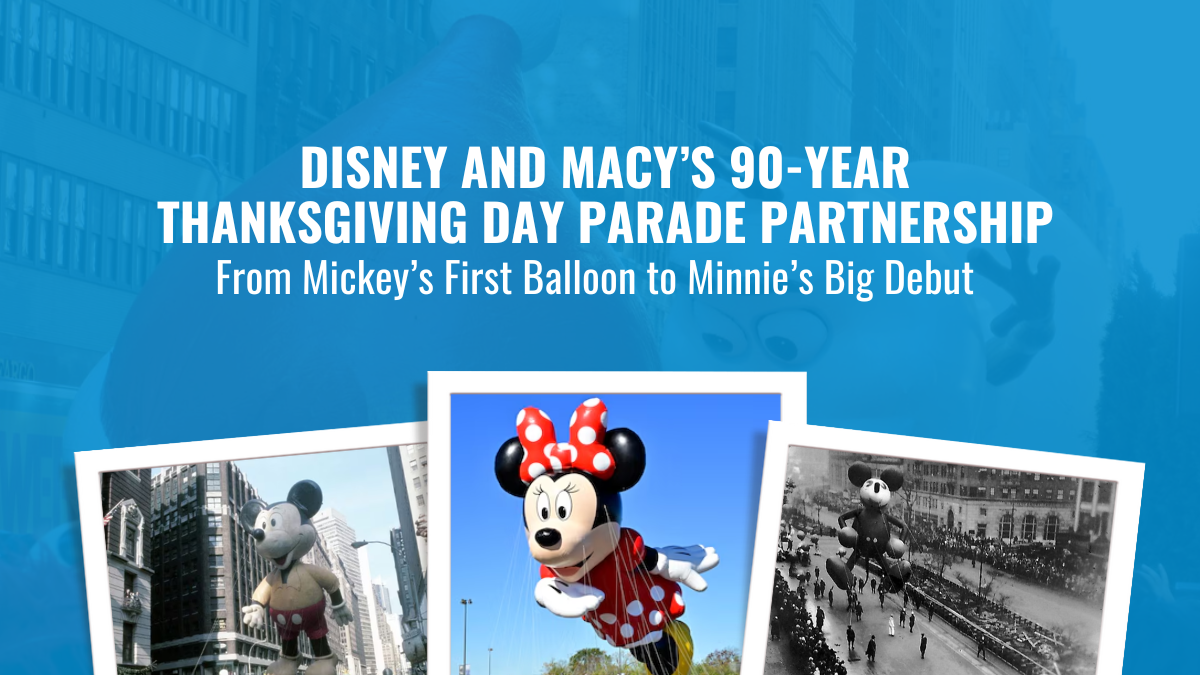
Now, folks, if you’re like me, Thanksgiving just wouldn’t be the same without a coffee, a cozy seat, and Macy’s Thanksgiving Day Parade on the TV. And if you’re really like me, you’re watching for one thing: Disney balloons floating down 34th Street. Ever wondered how Mickey, Donald, and soon Minnie Mouse found their way into this beloved New York tradition? Well, grab your popcorn because we’re diving into nearly 90 years of Disney’s partnership with Macy’s.
The Very First Parade and the Early Days of Balloons
The Macy’s Thanksgiving Day Parade goes way back to 1924, but if you can believe it, balloons weren’t part of the festivities until 1927. That first lineup included Felix the Cat, a dragon, and a toy soldier, all towering above the crowds. Back then, Macy’s had a pretty wild idea to end the parade: they would let the balloons drift off into the sky, free as birds. But this wasn’t just Macy’s feeling generous. Each balloon had a message attached, offering a $100 reward (about $1,800 in today’s dollars) for anyone who returned it to the flagship store on 34th Street.
And here’s where it gets interesting. This tradition carried on for a few years, right up until 1932, when Felix the Cat almost took down a plane flying over New York City! Imagine that—you’re flying into LaGuardia, and suddenly, there’s a 60-foot balloon drifting toward your wing. Needless to say, that was the end of Macy’s “fly away” stunt, and from then on, the balloons have stayed firmly grounded after the parade ends.

1934: Mickey Mouse Floats In, and Disney Joins the Parade
It was 1934 when Mickey Mouse finally made his grand debut in the Macy’s parade. Rumor has it Walt Disney himself collaborated with Macy’s on the design, and by today’s standards, that first Mickey balloon was a bit of a rough cut. This early Mickey had a hotdog-shaped body, and those oversized ears gave him a slightly lopsided look. But no one seemed to mind. Mickey was there, larger than life, floating down the streets of New York, and the crowd loved him.
Mickey wasn’t alone that year. He was joined by Pluto, Horace Horsecollar, and even the Big Bad Wolf and Practical Pig from The Three Little Pigs, making it a full Disney lineup for the first time. Back then, Disney wasn’t yet the entertainment powerhouse we know today, so for Walt, getting these characters in the parade meant making a deal. Macy’s required its star logo to be featured on each Disney balloon—a small concession that set the stage for Disney’s long-standing presence in the parade.
Duck Joins and Towers Over Mickey
A year later, in 1935, Macy’s introduced Donald Duck to the lineup, and here’s where things got interesting. Mickey may have been the first Disney character to float through the parade, but Donald made a huge splash—literally. His balloon was an enormous 60 feet tall and 65 feet long, towering over Mickey’s 40-foot frame. Donald quickly became a fan favorite, appearing in the lineup for several years before being retired.
Fast-forward a few decades, and Donald was back for a special appearance in 1984 to celebrate his 50th birthday. Macy’s dug the balloon out of storage, re-inflated it, and sent Donald down 34th Street once again, bringing a bit of nostalgia to the holiday crowd.
A Somber Parade in 2001
Now, one of my most memorable trips to the parade was in 2001, just weeks after the 9/11 attacks. Nancy and I, along with our friends, headed down to New York, and the mood was something I’ll never forget. We watched the start of the parade from Central Park West, but before that, we went to the Museum of Natural History the night before to see the balloons being inflated. They were covered in massive cargo nets, with sandbags holding them down. It’s surreal to see these enormous balloons anchored down before they’re set free.
That year, security was intense, with police lining the streets, and then-Mayor Rudy Giuliani rode on the Big Apple float to roaring applause. People cheered his name, waving and shouting as he passed. It felt like the entire city had turned out to show their resilience. Even amidst all the heightened security and tension, seeing those balloons—brought a bit of joy back to the city.

Balloon Prep: From New Jersey’s MetLife Stadium to California’s D23 Expo
Each year before the parade, Macy’s holds a rehearsal event known as Balloon Fest at MetLife Stadium in New Jersey. This is where handlers get their first crack at guiding the balloons, practicing with their parade masters, and learning the ropes—literally. It’s an entire production unto itself, with dozens of people rehearsing to make sure these enormous inflatables glide smoothly down the streets of New York on parade day.
In 2015, Macy’s took the balloon show on the road, bringing their Buzz Lightyear balloon out to California for the D23 Expo. I was lucky enough to be there, and watching Buzz get inflated piece by piece in the Anaheim Convention Center parking lot was something to behold. Each section was filled with helium in stages, and when they got around to Buzz’s lower half, well, there were more than a few gas-related jokes from the crowd.
These balloons seem to have a personality all their own, and seeing one like Buzz come to life up close—even outside of New York—had all the excitement and anticipation of the real deal.

Mickey’s Comeback as a Bandleader and Sailor Mickey
After a long hiatus, Mickey Mouse made his return to the Macy’s parade in 2000, this time sporting a new bandleader outfit. Nine years later, in 2009, Sailor Mickey joined the lineup, promoting Disney Cruise Line with a nautical twist. Over the past two decades, Disney has continued to enchant parade-goers with characters like Buzz Lightyear in 2008 and Olaf from Frozen in 2017. These balloons keep Disney’s iconic characters front and center, drawing in both longtime fans and new viewers.
But ever wonder what happens to the balloons after they reach the end of 34th Street? They don’t just disappear. Each balloon is carefully deflated, rolled up like a massive piece of laundry, and packed into storage bins. From there, they’re carted back through the Lincoln Tunnel to Macy’s Parade Studio in New Jersey, where they await their next flight.
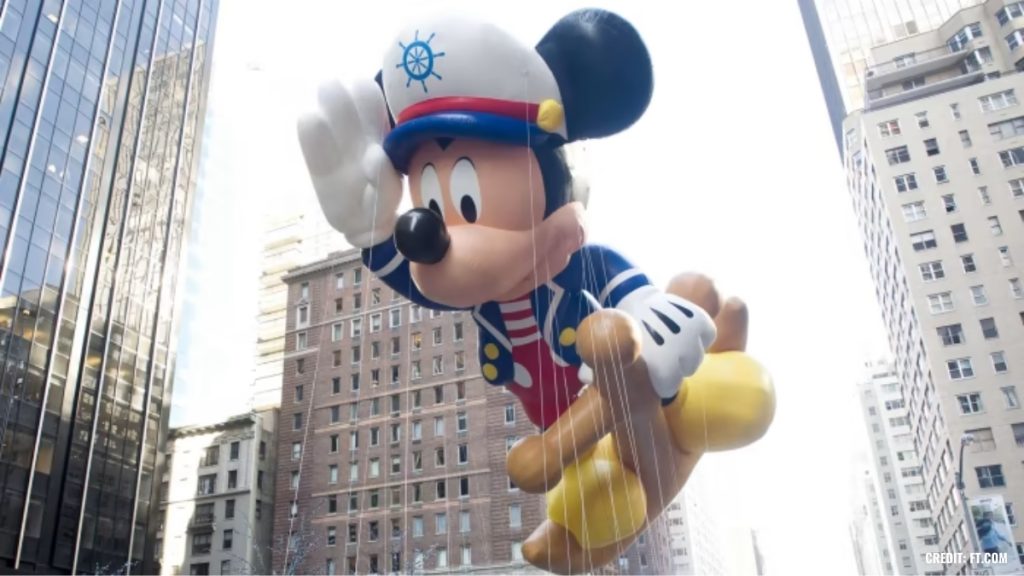
Macy’s Disney Celebration at Hollywood Studios
In 1992, Macy’s took the spirit of the parade down to Disney-MGM Studios in Orlando. After that year’s parade, several balloons—including Santa Goofy, Kermit the Frog, and Betty Boop—were transported to Hollywood Studios, re-inflated, and anchored along New York Street as part of a holiday display. Visitors could walk through this “Macy’s New York Christmas” setup and see the balloons up close, right in the middle of the park. While this display only ran for one season, it paved the way for the Osborne Family Spectacle of Dancing Lights, which became a holiday staple at the park for years to come.
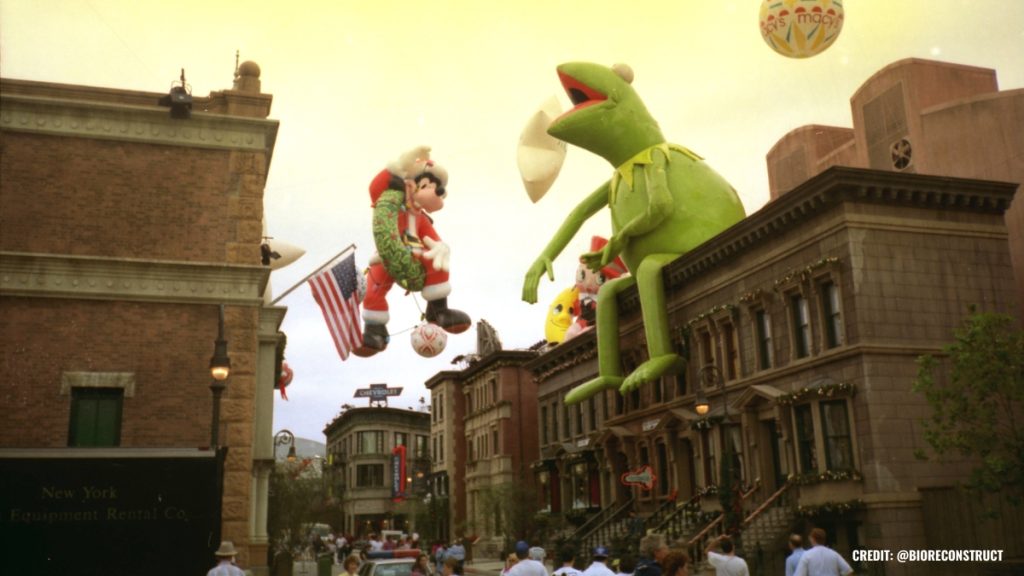
Minnie Mouse’s Long-Awaited Debut in 2024
This year, Minnie Mouse will finally join the parade, making her long-overdue debut. Macy’s is rolling out the red carpet for Minnie’s arrival with special pop-up shops across the country, where fans can find exclusive Minnie ears, blown-glass ornaments, T-shirts, and more to celebrate her first appearance in the Thanksgiving Day Parade.
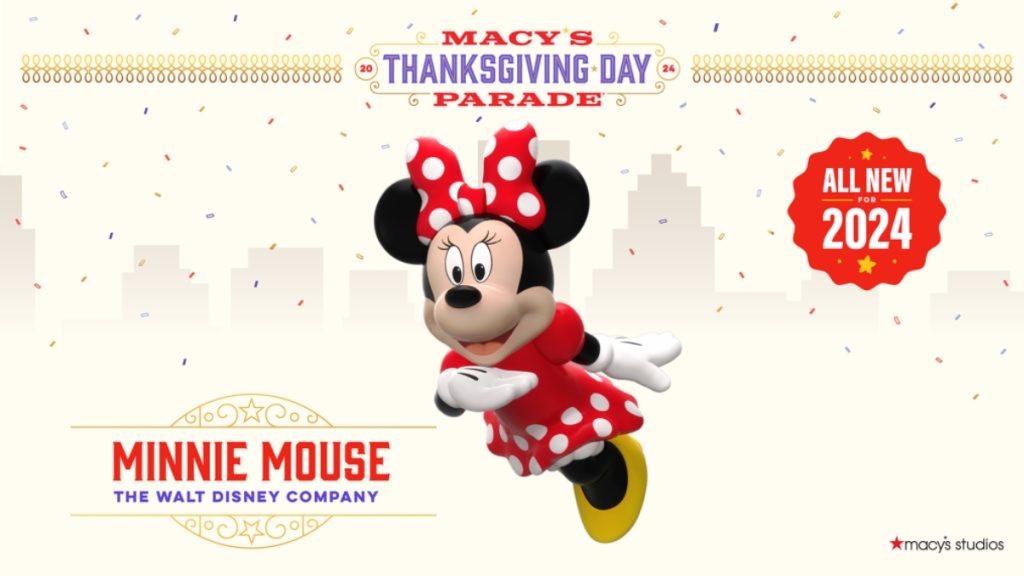
For those lucky enough to catch the parade this year, you’ll see Minnie take her first float down 34th Street, decked out in her iconic red bow and polka-dot dress. Macy’s and Disney are also unveiling a new Disney Cruise Line float honoring all eight ships, including the latest, the Disney Treasure.
As always, I’ll be watching from my favorite chair, coffee in hand, as Minnie makes her grand entrance. The 98th annual Macy’s Thanksgiving Day Parade airs live on NBC, and it’s a tradition you won’t want to miss—whether you’re on 34th Street or tuning in from home.
Theme Parks & Themed Entertainment
Disney’s Forgotten Halloween Event: The Original Little Monsters on Main Street
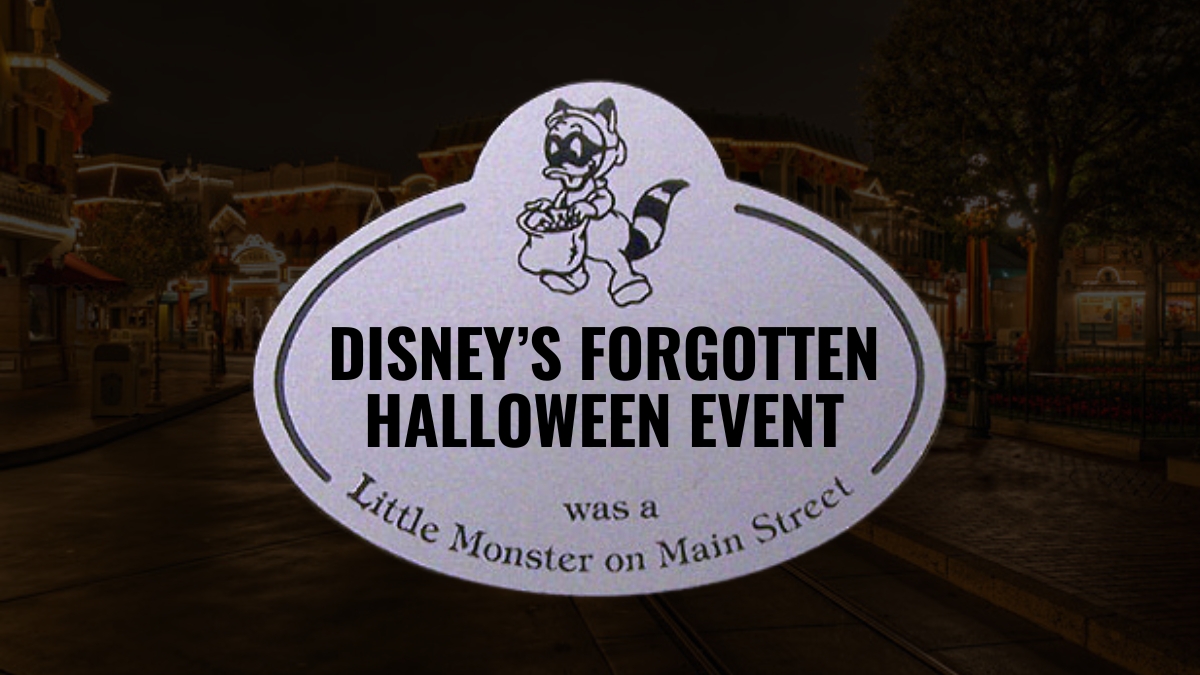
When most Disney fans think of Halloween in the parks, they immediately picture Mickey’s Not-So-Scary Halloween Party at Walt Disney World or the Oogie Boogie Bash at Disneyland Resort. But before those events took over as the must-attend spooky celebrations, there was a little-known event at Disneyland called Little Monsters on Main Street. And its origins? Well, they go all the way back to the 1980s, during a time when America was gripped by fear—the Satanic Panic.
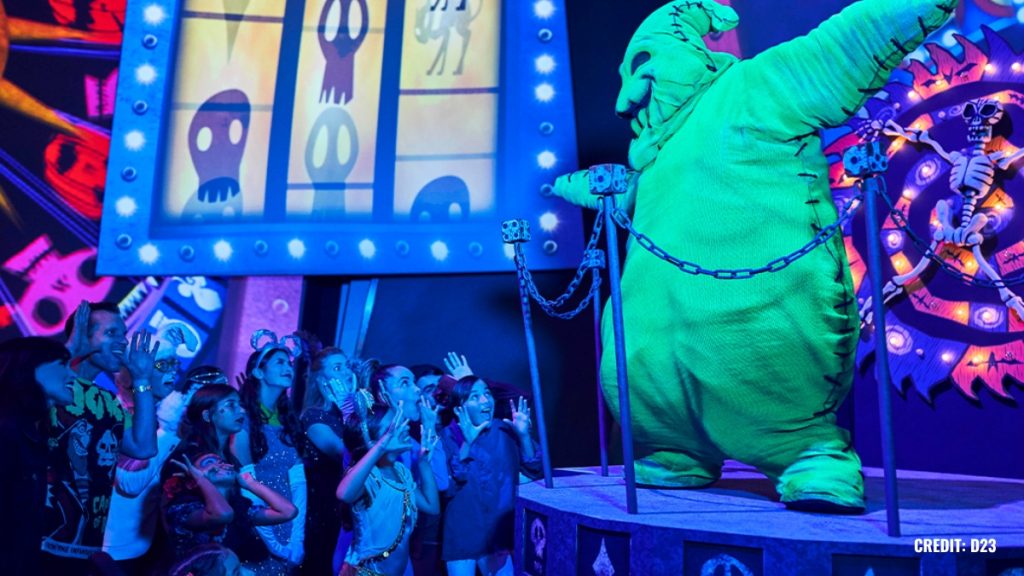
You see, back in the mid-1980s, parents were terrified that Halloween had become dangerous. Urban legends about drug-laced candy or razor blades hidden in apples were widespread, and many parents felt they couldn’t let their kids out of sight for even a moment. Halloween, which was once a carefree evening of trick-or-treating in the neighborhood, had suddenly become a night filled with anxiety.
This is where Disneyland’s Little Monsters on Main Street came in.
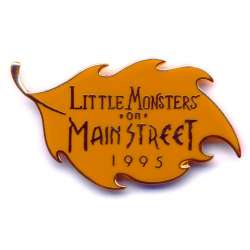
The Origins of Little Monsters on Main Street
Back in 1989, the Disneyland Community Action Team—later known as the VoluntEARS—decided to create a safe, nostalgic Halloween experience for Cast Members and their families. Many schools in the Anaheim area were struggling to provide basic school supplies to students, and the VoluntEARS saw an opportunity to combine a safe Halloween with a charitable cause. Thus, Little Monsters on Main Street was born.
This event was not open to the general public. Only Disneyland Cast Members could purchase tickets, which were initially priced at just $5 each. Cast Members could bring their kids—but only as many as were listed as dependents with HR. And even then, the park put a cap on attendance: the first event was limited to just 1,000 children.
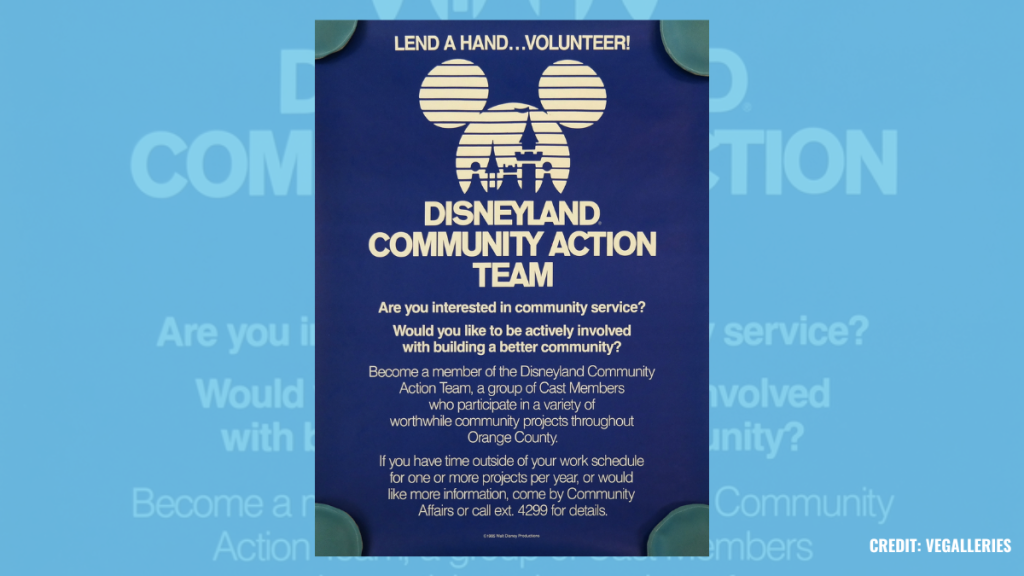
A Unique Halloween Experience
Little Monsters on Main Street wasn’t just another Halloween party. It was designed to give kids a safe, fun environment to enjoy trick-or-treating, much like the good old days. On Halloween night in 1989, kids in costume wandered through Disneyland with their pillowcases, visiting 20 different trick-or-treat stations. They also had the chance to ride a few of their favorite Fantasyland attractions, all after the park had closed to the general public.
The event was run entirely by the VoluntEARS—about 200 of them—who built and set up all the trick-or-treat stations themselves. They arrived at Disneyland before the park closed and, as soon as the last guest exited, they began setting up stations across Main Street, Adventureland, Frontierland, Fantasyland, and Tomorrowland. The event ran from 7:30 to 9:30 p.m., and by the time the last pillowcase-wielding kid left, the VoluntEARS cleaned everything up, making sure the park was ready for the next day’s operations.
It wasn’t just candy and rides, though. The event featured unique entertainment, like a Masquerade Parade down Main Street, U.S.A., where kids could show off their costumes. And get this—Disneyland even rigged up a Cast Member dressed as a witch to fly from the top of the Matterhorn to Frontierland on the same wire that Tinker Bell uses during the fireworks. Talk about a magical Halloween experience!
The Haunted Mansion “Tip-Toe” Tour
Perhaps one of the most memorable parts of Little Monsters on Main Street was the special “tip-toe tour” of the Haunted Mansion. Now, Disneyland’s Haunted Mansion can be a pretty scary attraction for younger kids, so during this event, Disney left the doors to the Stretching Room and Portrait Gallery wide open. This allowed kids to walk through and peek at the Haunted Mansion’s spooky interiors without actually having to board the Doom Buggies. For those brave enough to ride, they could, of course, take the full trip through the Haunted Mansion—or they could take the “chicken exit” and leave, no harm done.
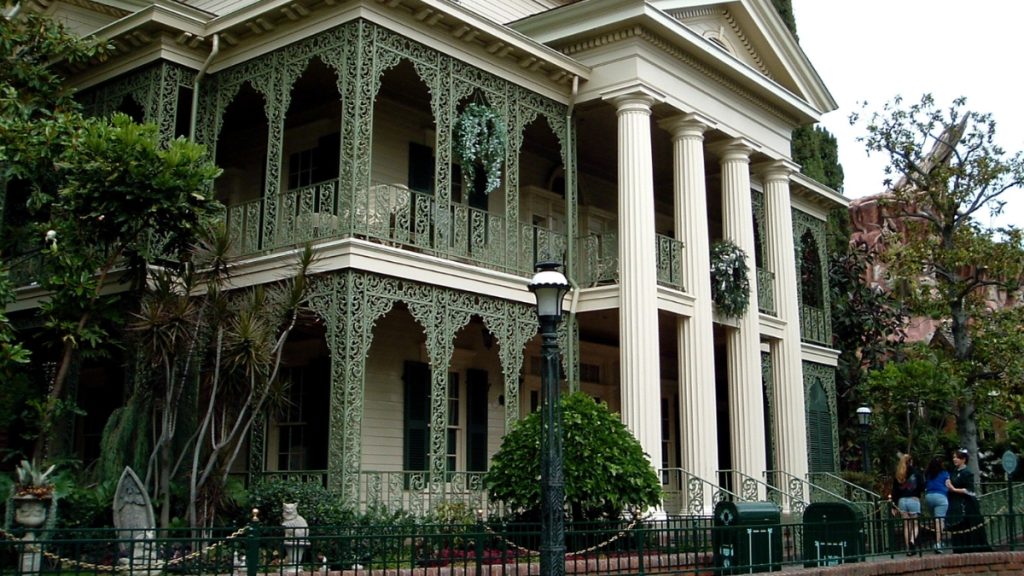
Growing Success and a Bigger Event
Thanks to the event’s early success, Little Monsters on Main Street grew in size. By 1991, the attendance cap had been raised to 2,000 kids, and Disneyland added more activities like magic shows and hayrides. They also extended the event’s hours, allowing kids to enjoy the festivities until 10:30 p.m.
In 2002, the event moved over to Disney California Adventure, where it could accommodate even more kids—up to 5,000 in its later years. The name was also shortened to just Little Monsters, since it was no longer held on Main Street. This safe, family-friendly Halloween event continued for several more years, with the last mention of Little Monsters appearing in the Disneyland employee newsletter in 2008. Though some Cast Members recall the event continuing until 2012, it eventually made way for Disney’s more public-facing Halloween events.
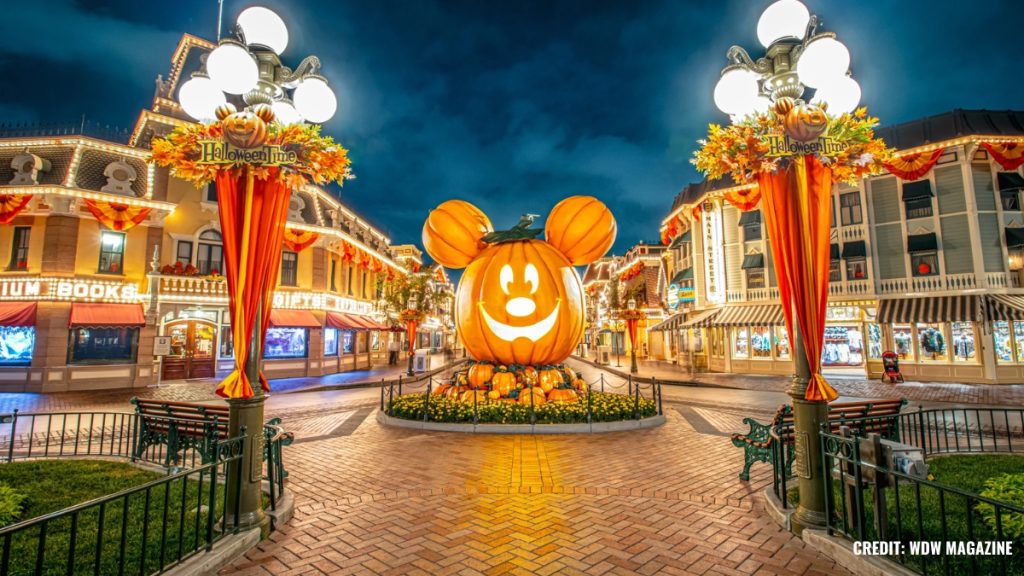
From Little Monsters to Mickey’s Not-So-Scary and Oogie Boogie Bash
Starting in the early 2000s, Disney began realizing the potential of Halloween-themed after-hours events for the general public. These early versions of Mickey’s Halloween Party and Mickey’s Halloween Treat eventually evolved into today’s Mickey’s Not-So-Scary Halloween Party and Oogie Boogie Bash. Unfortunately, this also marked the end of the intimate, Cast Member-exclusive Little Monsters event, but it paved the way for the large-scale Halloween celebrations we know and love today.
While it’s bittersweet to see Little Monsters on Main Street fade into Disney history, its legacy lives on through these modern Halloween parties. And even though Cast Members now receive discounted tickets to Mickey’s Not-So-Scary and Oogie Boogie Bash, the special charm of an event created specifically for Disney’s employees and their families remains something worth remembering.
The Merch: A Piece of Little Monsters History
For Disney collectors, the exclusive merchandise created for Little Monsters on Main Street is still out there. You can find pins, name tags, and themed pillowcases on sites like eBay. One of the coolest collectibles is a 1997 cloisonné pin set featuring Huey, Dewey, and Louie dressed as characters from Hercules. Other sets paid tribute to the Main Street Electrical Parade and Pocahontas, while the pillowcases were uniquely designed for each year of the event.
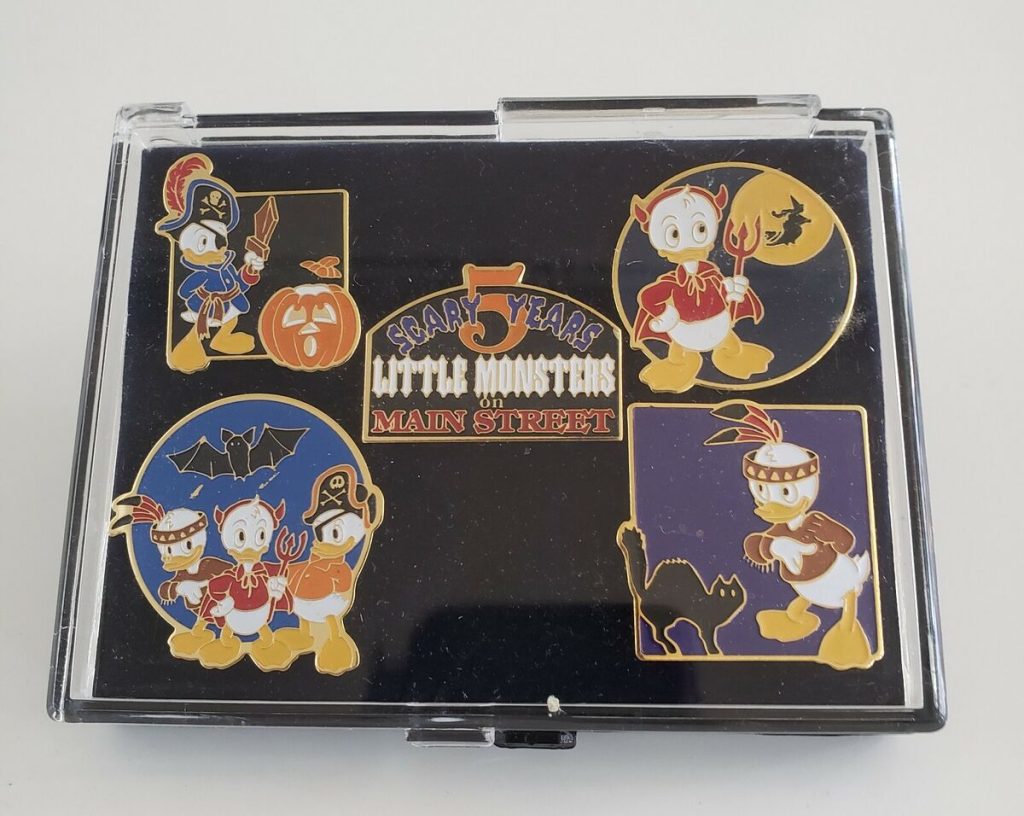
While Little Monsters on Main Street may be gone, it’s a fascinating piece of Disneyland history that played a huge role in shaping the Halloween celebrations we enjoy at Disney parks today.
Want to hear more behind-the-scenes stories like this? Be sure to check out I Want That Too, where Lauren and I dive deep into the history behind Disney’s most beloved attractions, events, and of course, merchandise!
Theme Parks & Themed Entertainment
The Story of Mickey’s Not-So-Scary Halloween Party: From One Night to a Halloween Family Tradition
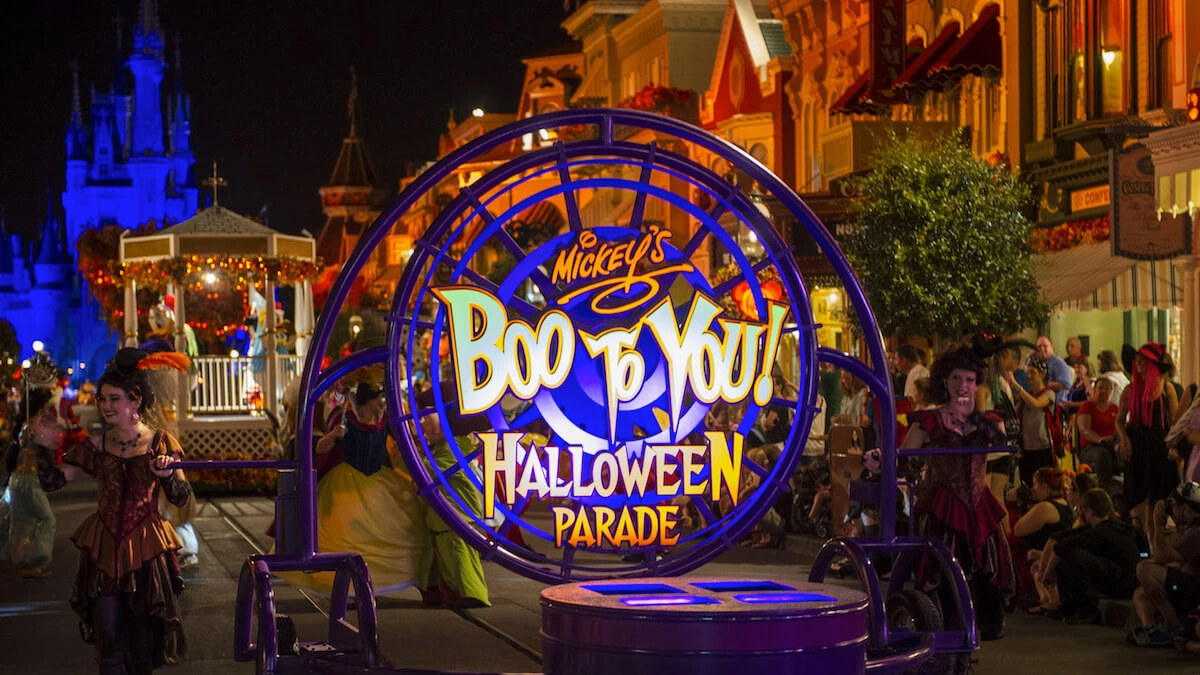
The spooky season is already in full swing at Disney parks on both coasts. On August 9th, the first of 38 Mickey’s Not-So-Scary Halloween Party (MNSSHP) nights for 2024 kicked off at Florida’s Magic Kingdom. Meanwhile, over at Disney California Adventure, the Oogie Boogie Bash began on August 23rd and is completely sold out across its 27 dates this year.
Looking back, it’s incredible to think about how these Halloween-themed events have grown. But for Disney, the idea of charging guests for Halloween fun wasn’t always a given. In fact, when the very first Mickey’s Not-So-Scary Halloween Party debuted on October 31, 1995, it was a modest one-night-only affair. Compare that to the near month-long festivities we see today, and it’s clear that Disney’s approach to Halloween has evolved considerably.
A Not-So-Scary Beginning
I was fortunate enough to attend that very first MNSSHP back in 1995, along with my then 18-month-old daughter Alice and her mom, Michelle. Tickets were a mere $16.95 (I know, can you imagine?), and we pushed Alice around in her sturdy Emmaljunga stroller—Swedish-built and about the size of a small car. Cast Members, charmed by her cuteness, absolutely loaded us up with candy. By the end of the night, we had about 30 pounds of fun-sized candy bars, making that push up to the monorail a bit more challenging.
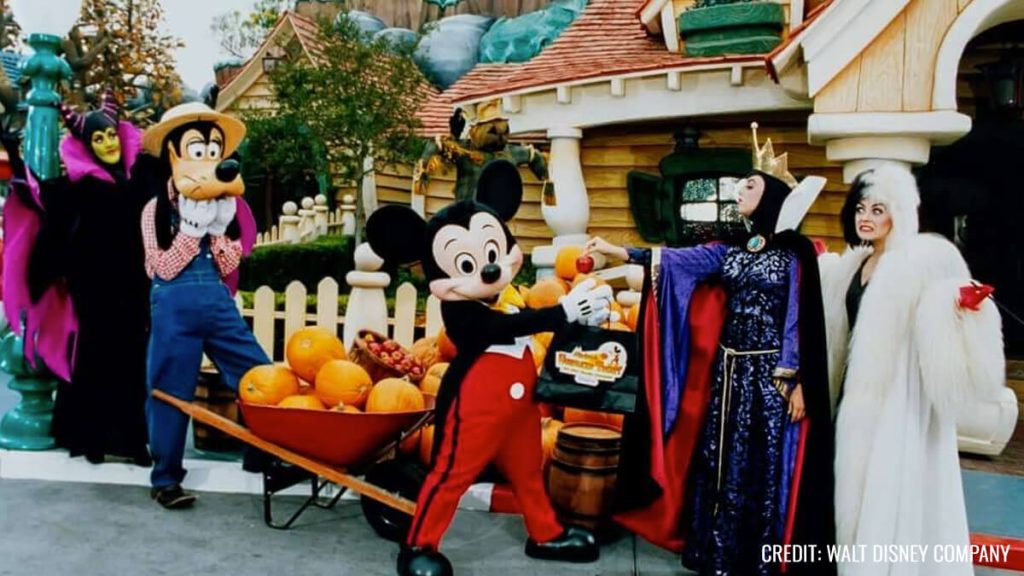
This Halloween event was Disney’s response to the growing popularity of Universal Studios Florida’s own Halloween hard ticket event, which started in 1991 as “Fright Nights” before being rebranded as “Halloween Horror Nights” the following year. Universal’s gamble on a horror-themed experience helped salvage what had been a shaky opening for their park, and by 1993, Halloween Horror Nights was a seven-night event, with ticket prices climbing as high as $35. Universal had stumbled upon a goldmine, and Disney took notice.
A Different Approach
Now, here’s where Disney’s unique strategy comes into play. While Universal embraced the gory, scare-filled world of horror, Disney knew that wasn’t their brand. Instead of competing directly with blood and jump-scares, Disney leaned into what they did best: creating magical, family-friendly experiences.
Thus, Mickey’s Not-So-Scary Halloween Party was born. The focus was on fun and whimsy, not fear. Families could bring their small children without worrying about them being terrified by a chainsaw-wielding maniac around the next corner. This event wasn’t just a Halloween party—it was an extension of the Disney magic that guests had come to expect from the parks.
Disney had some experience with seasonal after-hours events, most notably Mickey’s Very Merry Christmas Party, which had started in 1983. But the Halloween party was different, as the Magic Kingdom wasn’t yet decked out in Halloween decor the way it is today. Disney had to create a spooky (but not too spooky) atmosphere using temporary props, fog machines, and, of course, lots of candy.
A key addition to that first event? The debut of the Headless Horseman, who made his eerie appearance in Liberty Square, riding a massive black Percheron. It wasn’t as elaborate as the Boo-to-You Parade we see today, but it marked the beginning of a beloved Disney Halloween tradition.
A Modest Start but a Big Future
That first MNSSHP in 1995 was seen as a trial run. As Disney World spokesman Greg Albrecht told the Orlando Sentinel, “If it’s successful, we’ll do it again.” And while attendance was sparse that night, there was clearly potential. By 1997, the event expanded to two nights, and by 1999, Mickey’s Not-So-Scary Halloween Party had grown into a multi-night celebration with a full-fledged parade. Today, in 2024, it’s a staple of the fall season at Walt Disney World, offering 38 nights of trick-or-treating, character meet-and-greets, and special entertainment.
Universal’s Influence
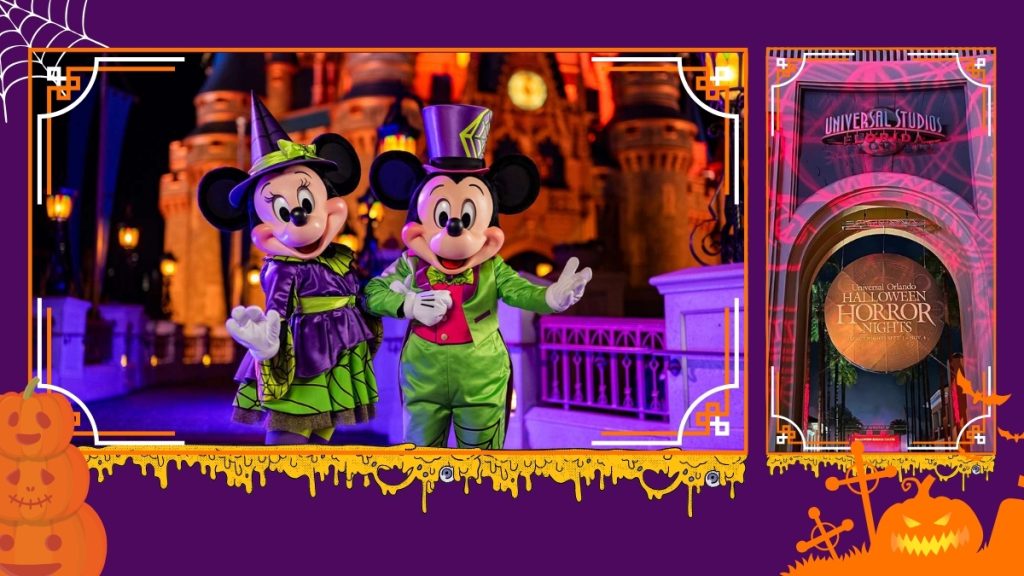
It’s interesting to reflect on how Disney’s Halloween event might never have existed without the competition from Universal. Just as “The Wizarding World of Harry Potter” forced Disney to step up their game with “Star Wars: Galaxy’s Edge,” Universal’s success with Halloween Horror Nights likely spurred Disney into action with MNSSHP. The friendly rivalry between the two parks has continually pushed both to offer more to their guests, and we’re all better off because of it.
So the next time you find yourself trick-or-treating through the Magic Kingdom, watching the Headless Horseman gallop by, or marveling at the seasonal fireworks, take a moment to appreciate how this delightful tradition came to be—all thanks to a little competition and Disney’s commitment to creating not-so-scary magic.
For more Disney history and behind-the-scenes stories, check out the latest episodes of the I Want That Too podcast on the Jim Hill Media network.
-
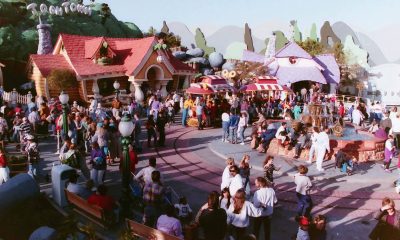
 History10 months ago
History10 months agoThe Evolution and History of Mickey’s ToonTown
-
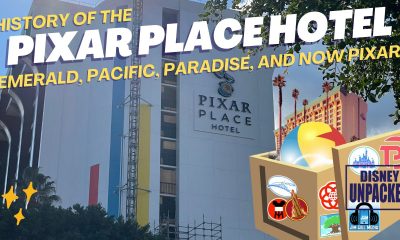
 History11 months ago
History11 months agoUnpacking the History of the Pixar Place Hotel
-
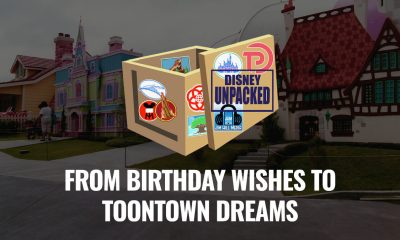
 History11 months ago
History11 months agoFrom Birthday Wishes to Toontown Dreams: How Toontown Came to Be
-
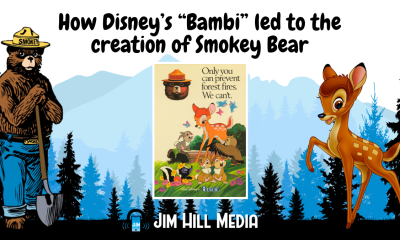
 Film & Movies8 months ago
Film & Movies8 months agoHow Disney’s “Bambi” led to the creation of Smokey Bear
-

 News & Press Releases10 months ago
News & Press Releases10 months agoNew Updates and Exclusive Content from Jim Hill Media: Disney, Universal, and More
-
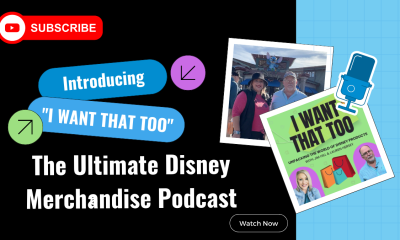
 Merchandise8 months ago
Merchandise8 months agoIntroducing “I Want That Too” – The Ultimate Disney Merchandise Podcast
-
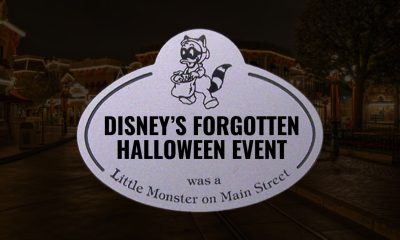
 Theme Parks & Themed Entertainment3 months ago
Theme Parks & Themed Entertainment3 months agoDisney’s Forgotten Halloween Event: The Original Little Monsters on Main Street
-
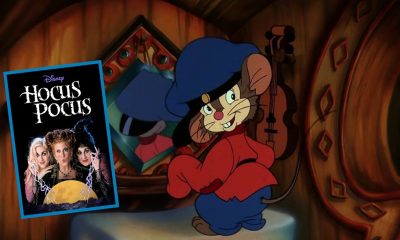
 Film & Movies3 months ago
Film & Movies3 months agoHow “An American Tail” Led to Disney’s “Hocus Pocus”

